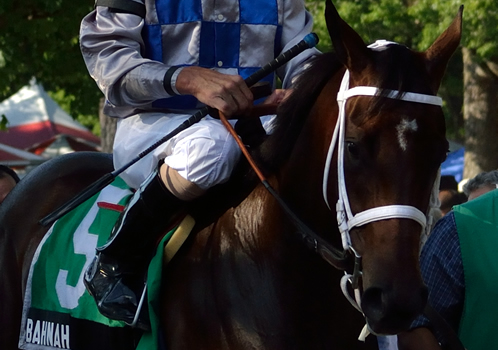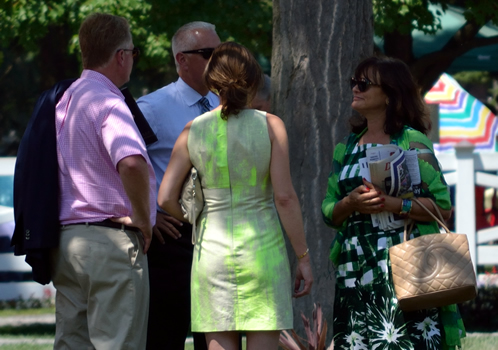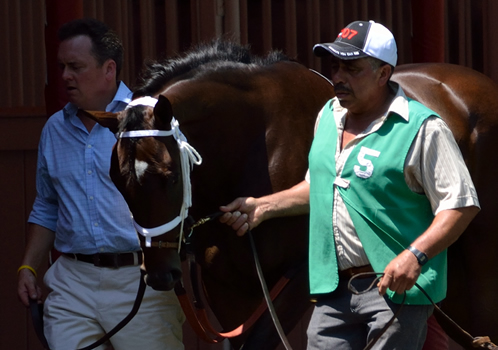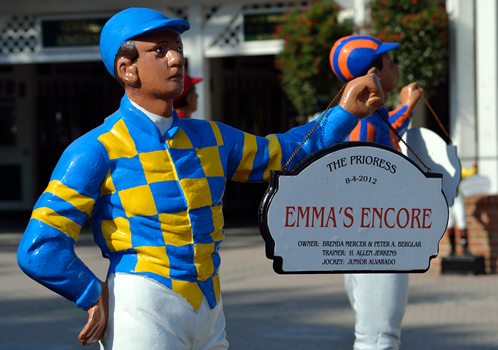Saratoga
Announcer Tom Durkin, no shrinking sartorial violet, established a new personal standard on July 26, when he showed up in bubble gum-pink trousers, cream-colored blazer, a lime-green shirt and tie, white belt and yellow Gucci loafers. Somehow, Durkin avoided being pulled over by police while riding to the track on his yellow Vespa scooter …
Our Amazing Rose gets a Beyer speed figure of 91 for winning the fifth race on Thursday at Saratoga by 7 3/4 lengths. She went the five furlongs in :57.68, or .59 seconds faster than stablemate Corfu did winning the second. Both making their career debuts for trainer Todd Pletcher, of course. Watch the replay.
I didn’t win on opening day at Saratoga, but at least I caught both winners of the Schuylerville as they were leaving the paddock with my camera:

Brazen Persuasion and jockey Rosie Napravnik.

Favored Bahnah.
And here they are, at the wire:

Photo of the 2013 Schuylerville dead heat, courtesy of NYRA.
A few more photos from the day:

Stonestreet owner and Racetrack House of Style contender Barbara Banke (right), beautifully accessorizing with Chanel and the Daily Racing Form.

The field turns into the stretch in race six.

Hessonite walks to the gate for race four.

Ireland, a full sister to Dublin, before her career debut in race three.

A pleasant reminder of one of the 2012 meet’s best moments.
Copyright © 2000-2023 by Jessica Chapel. All rights reserved.